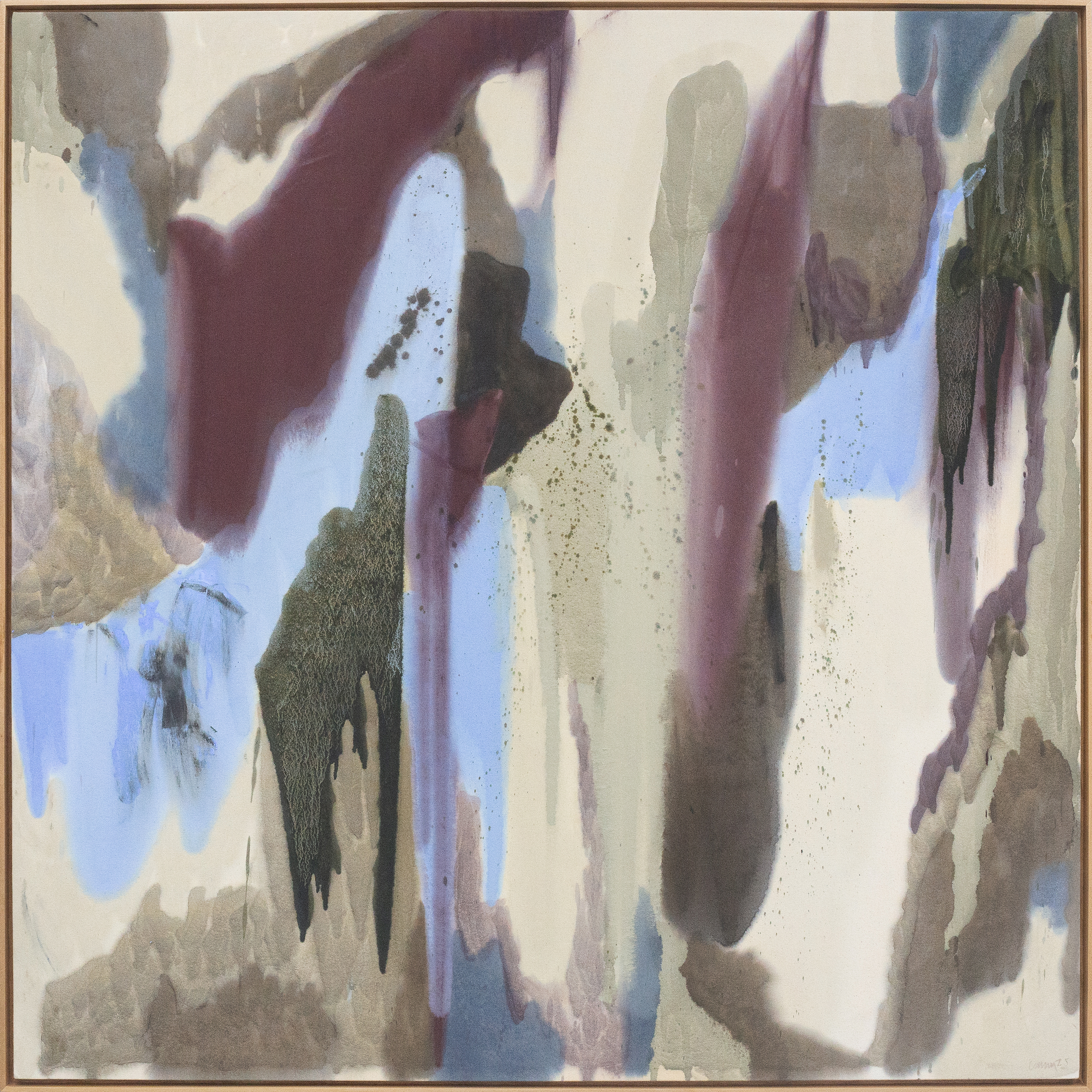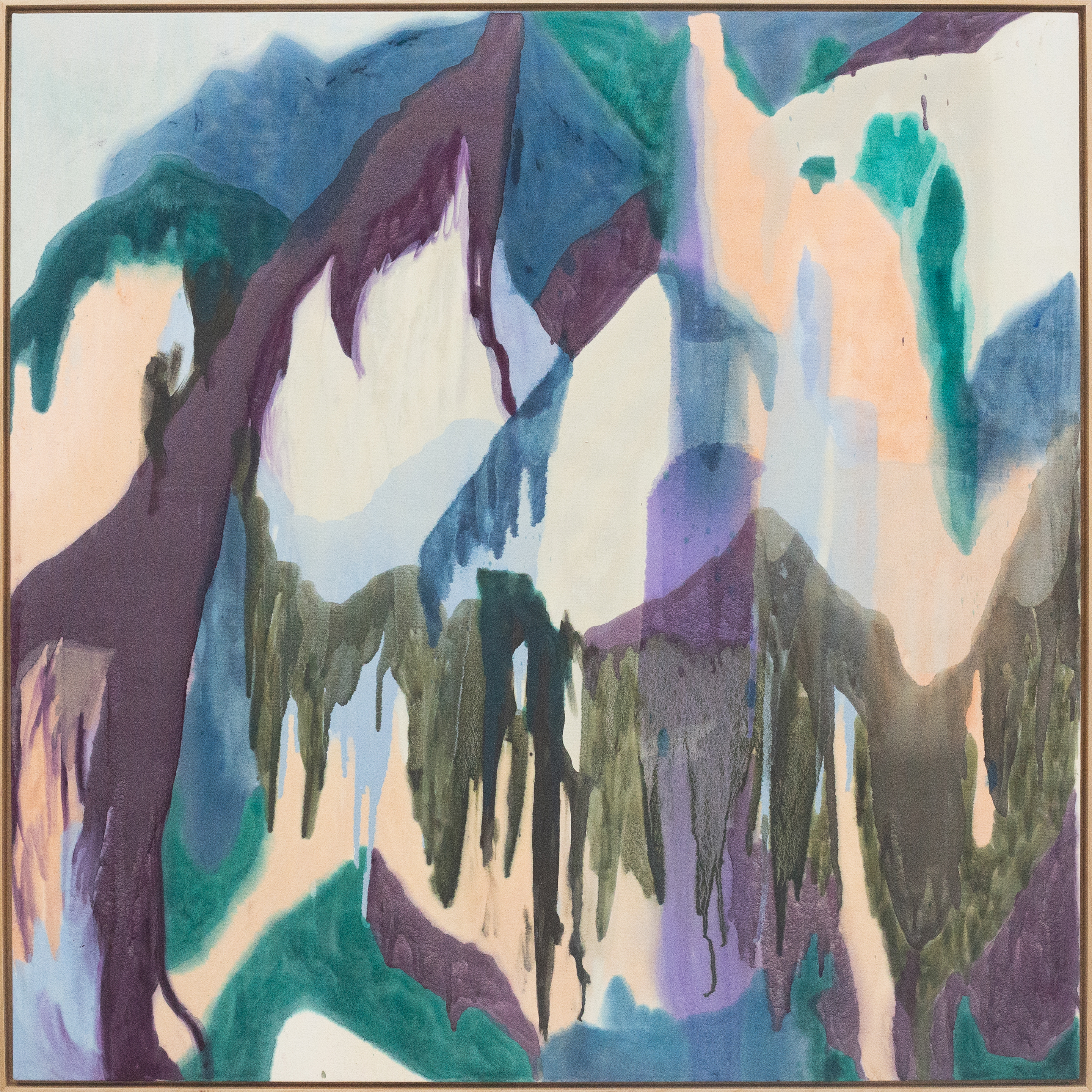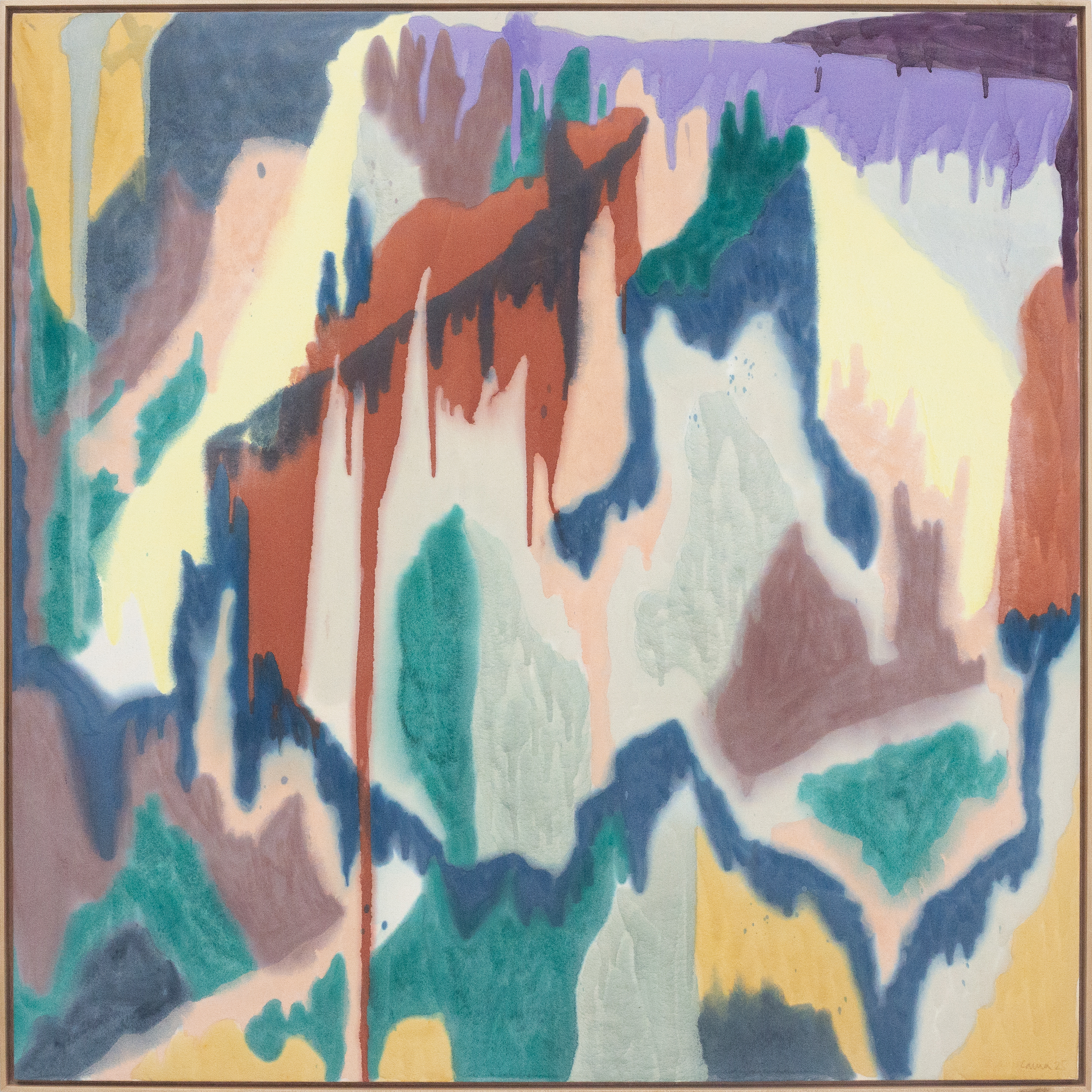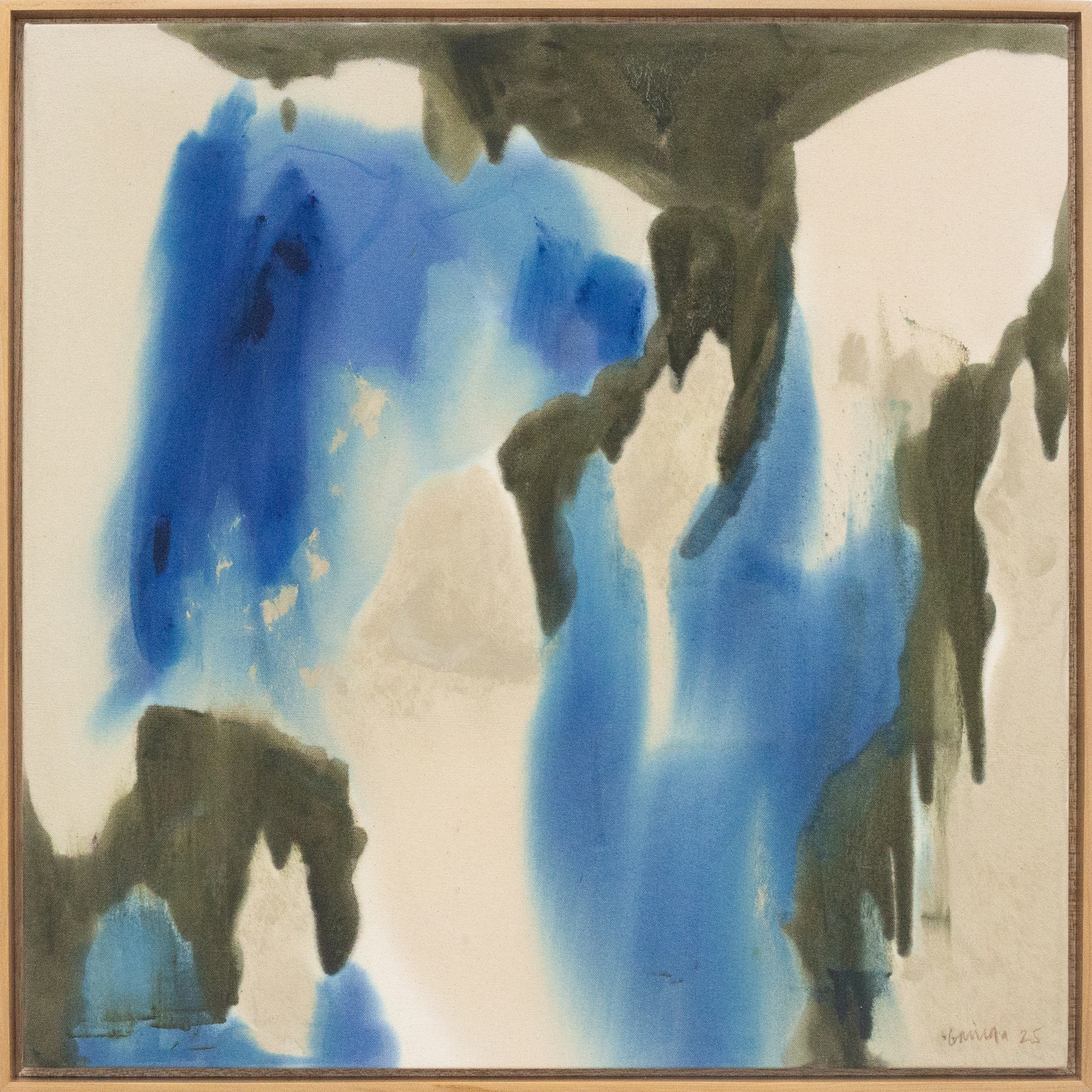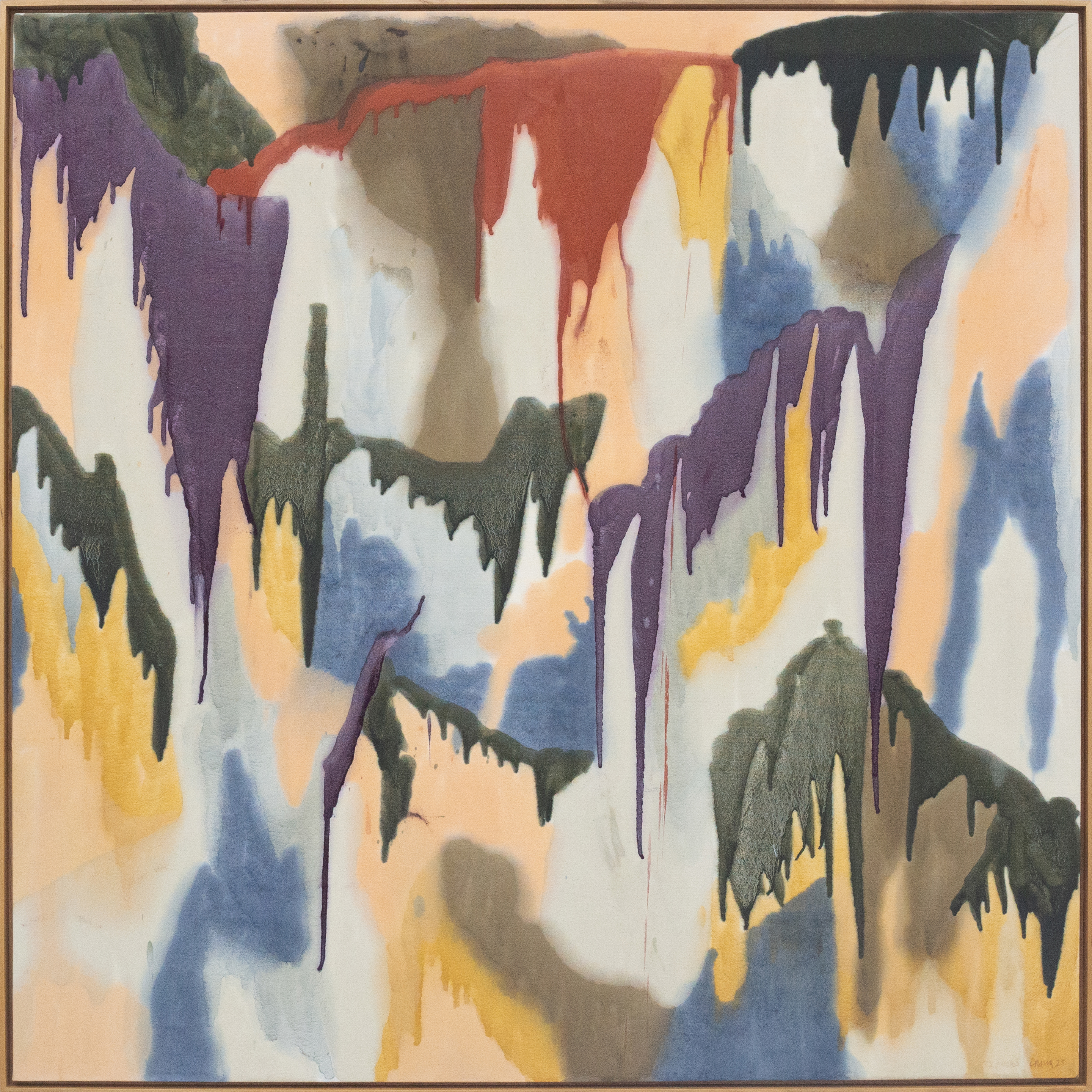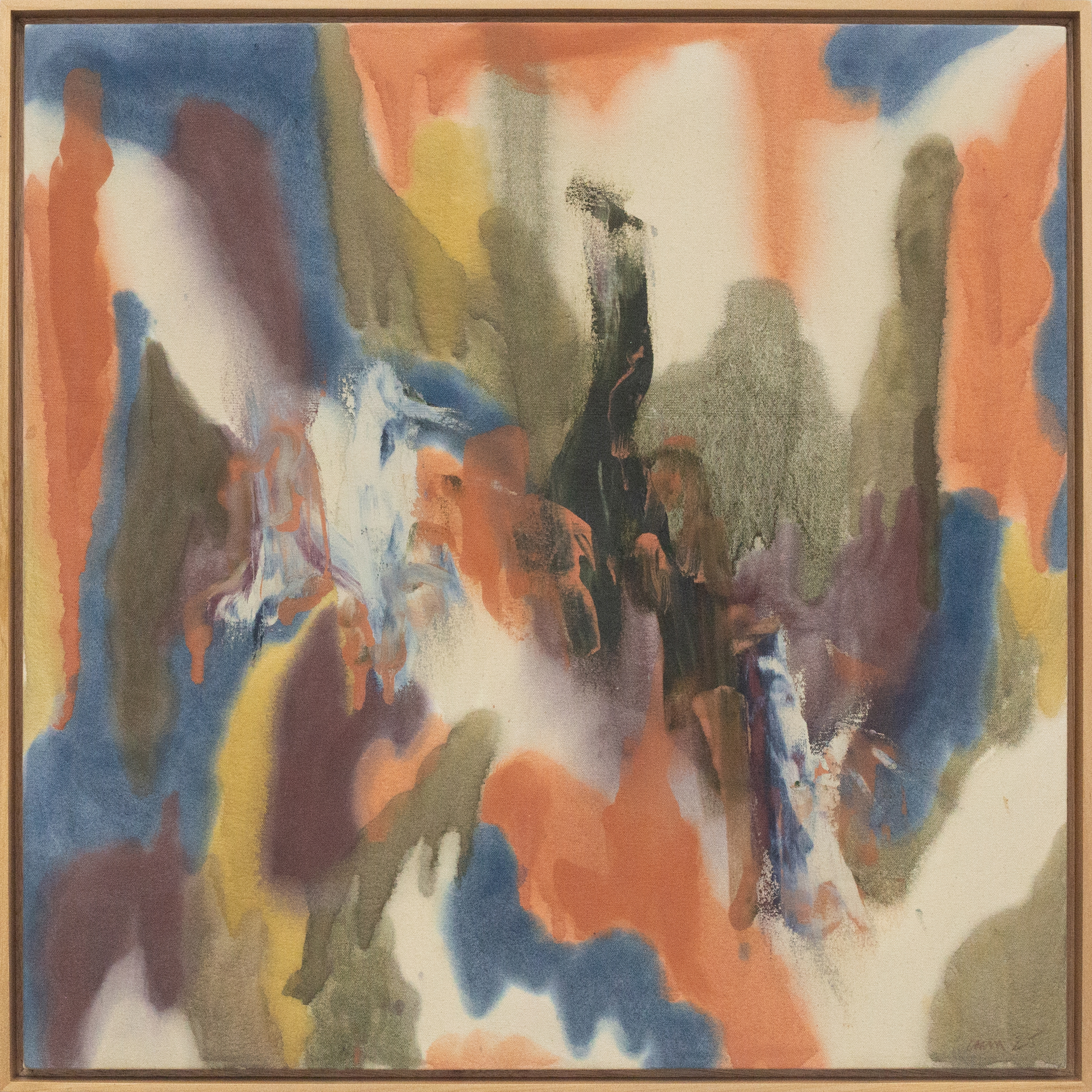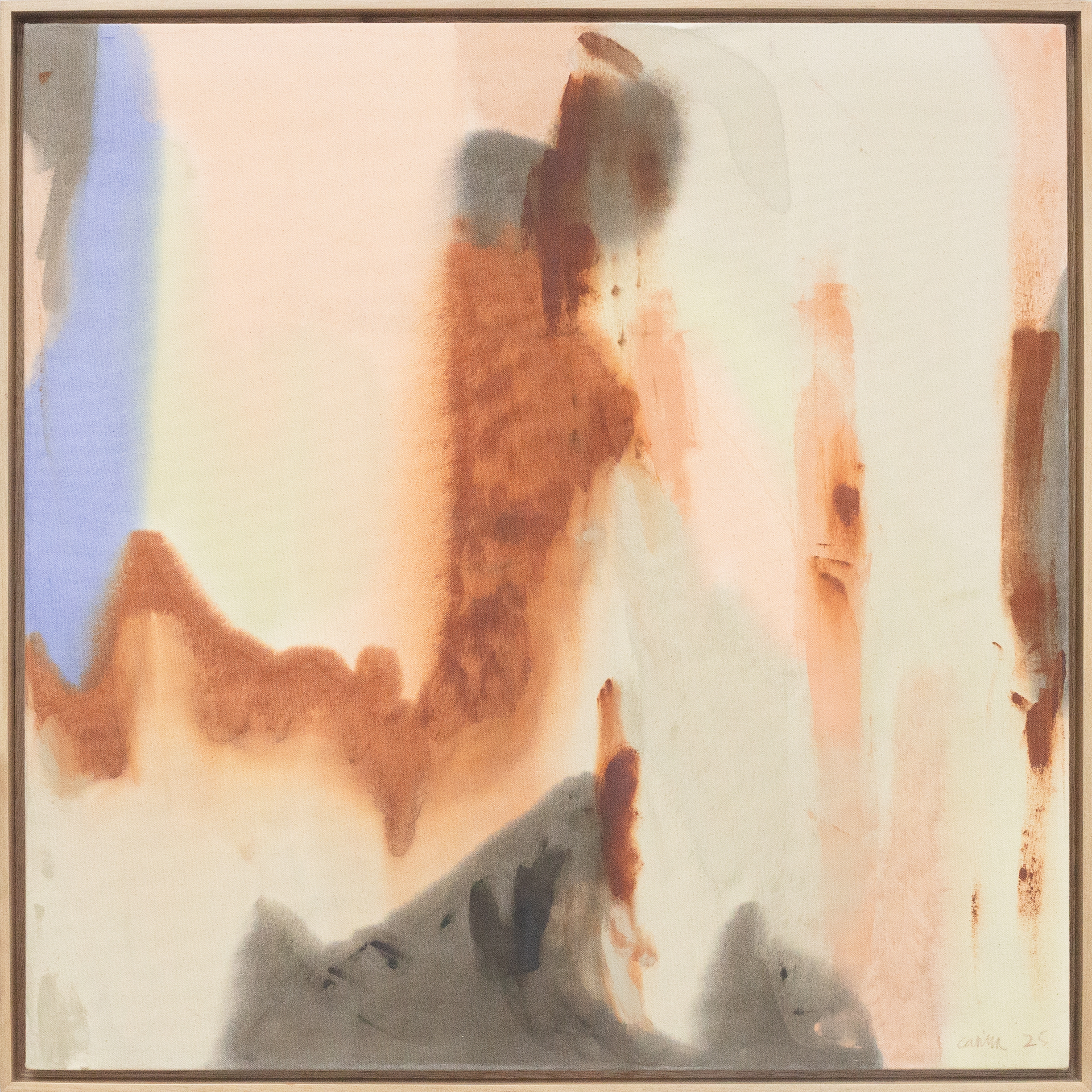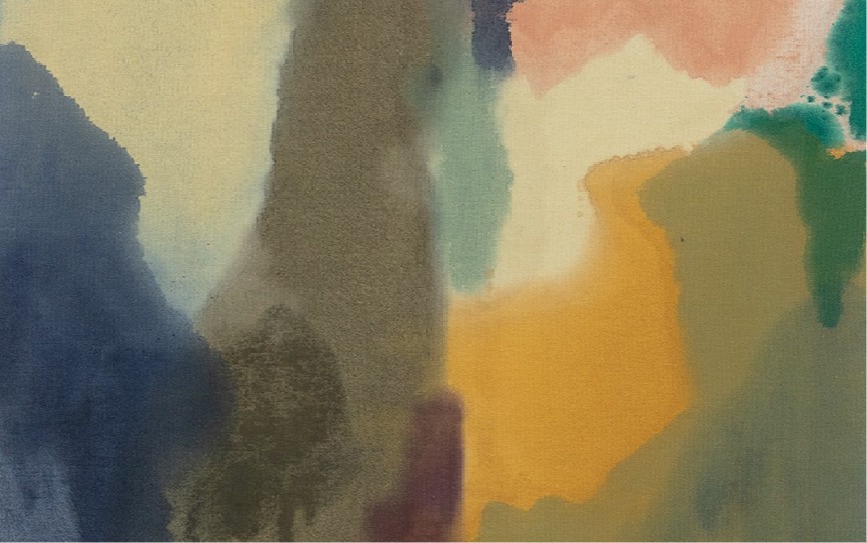
Eight Views from the Border
Carina Santos
Silverlens, Manila
About
Cloudy gray skies, mossy terrains and bathwater white ponds. Lilacs in a dense, unruly thicket, a melting icicle, a blurry view of the countryside from a speeding bullet train.
There is a strange, affecting nostalgia to Carina Santos’ so-called “pour paintings,” evocative abstract paintings that employ material, gesture and chance to conjure up memories of terrains and skies. Looking at the artist’s paintings from the series sometimes feels like staring out of windows, and into a hazy view of remembrances from the natural world.
The starting point of these pour paintings was a series of figurative oil paintings of mountains, that the artist exhibited in Manila in the mid 2010s. Those exhibitions often showcased several dozens of her mountain paintings, displaying them side by side, creating a never-ending horizon in a four-walled gallery space. Seemingly painting to exhaustion, Santos refrained from portraying the painter’s hand as a machine of repetition, allowing the mountains in her paintings to transform and evolve, to deteriorate and lose focus. Some of these paintings took on a mystic, surreal bent, doubling or even tripling up the images of mountains on the canvas, or even breaking down the landscapes to nothing but emotive colors. Ultimately, the figurative nature of the series became diluted, as its more emotive aspects came to the fore.\
In the most interesting instances from that series, the artist painted the mountains to seem like they were melting, almost like a memory that was quickly dissolving—it made the viewer wonder if they were looking at an iceberg instead of a mountain. A lifelong student of literature and a writer in her own right, there is something to the iceberg theory in Santos’ practice. A writing technique attributed to the hypermasculine American writer Ernest Hemingway, the iceberg theory is a process characterized by omission, a minimalistic style that focused on surface elements while holding depths of meaning and emotion right under the surface.
Born into a family of painters, Santos took the long road to the visual arts, taking productive if stubborn detours through graphic design, advertising, and journalism as a way to carve out her own place in the world. In those mediums, she distinguished herself with a quietly idiosyncratic style: a graphic designer likely to take a collage-like approach to a magazine layout, a visual communicator who preferred liminal spaces, a culture writer skeptical of easy answers. Ultimately, Santos followed those disparate paths to artmaking.
Early in her career as an artist, Santos mostly worked in collages. In what seemed like an extension of her work as a graphic designer and as a writer, the artist often reckoned with visual memory in those early works, relying on archival photographs and lines from poetry in order to communicate feelings of despair and glimmers of hope. Even then, there was a sense in the artist’s work of someone grappling with the world’s vastness, her place in it and feelings of invisibility, of getting lost in the immensity of things. In hindsight, those early exhibitions felt like the tentative steps of a young artist looking for permission to work in the visual arts, relying on mediums she felt more comfortable in to convey ocean-deep feelings of alienation and hope.
Santos took an early stab at oil painting in her college years. Consciously working in her family’s formidable shadow, she felt demoralized in her attempt to paint in the hyperrealistic style of her parents. That endeavor felt futile, at odds with her own sensibilities and strengths. But over a decade later, as Santos moved from her native Manila to the United Kingdom, in order to complete a masters in theory and philosophy at the Central Saint Martins, University of the Arts London, she began to meaningfully explore the medium, eventually finding a style of painting that spoke to her sensibilities: a placid, meditative approach that leaned on a confident manipulation of medium but left room for happenstance.
In the spirit of that process, Santos eschews the pre-planning that has become the norm for a lot of contemporary painters. She doesn’t sketch to compose the paintings, as some abstractionists do, nor does she use projectors to help transfer photographic images onto the canvas, in the style of hyperrealist painters. Instead, her process begins with mixing color, pouring pigment on a canvas laid flat on the floor, allowing it to sit and lead her to where the painting should go. “It’s not really an accident because it is deliberate," Santos says. “But when the colors interact, it does create something new and surprising. I do lead it, but it ends up where it wants to be.”
It’s moving to consider that an artist who once attempted to reckon with the vastness of the world, in a desperate attempt to hold on to the parts of it that she could control, would eventually find a new strength as an artist by learning to let go, by inviting chance into her process. Eight Views From the Border then is a kind of culmination of this journey. Featuring eight of the artist’s pour paintings, the exhibition sees Santos working with a new confidence, revealing a hard-won new language for painting that harnesses all the learnings from her past lives while taking the long view on her practice.
—Raymond Ang
Carina Santos’ (b. 1988, Manila) practice moves within the intersections between arts, letters, and design. She completed her Masters in Theory and Philosophy at the Central Saint Martins, University of the Arts London. Since moving to the UK, Santos has been venturing into a more diverse approach, introducing new media (websites, video, sound) into the overall body of work, with a particular interest in collaboration and communication via the Internet. Santos’ works often present narratives informed by the spaces and landscapes we inhabit and exist. She lives and works between Manila and London.
Installation Views
Works
